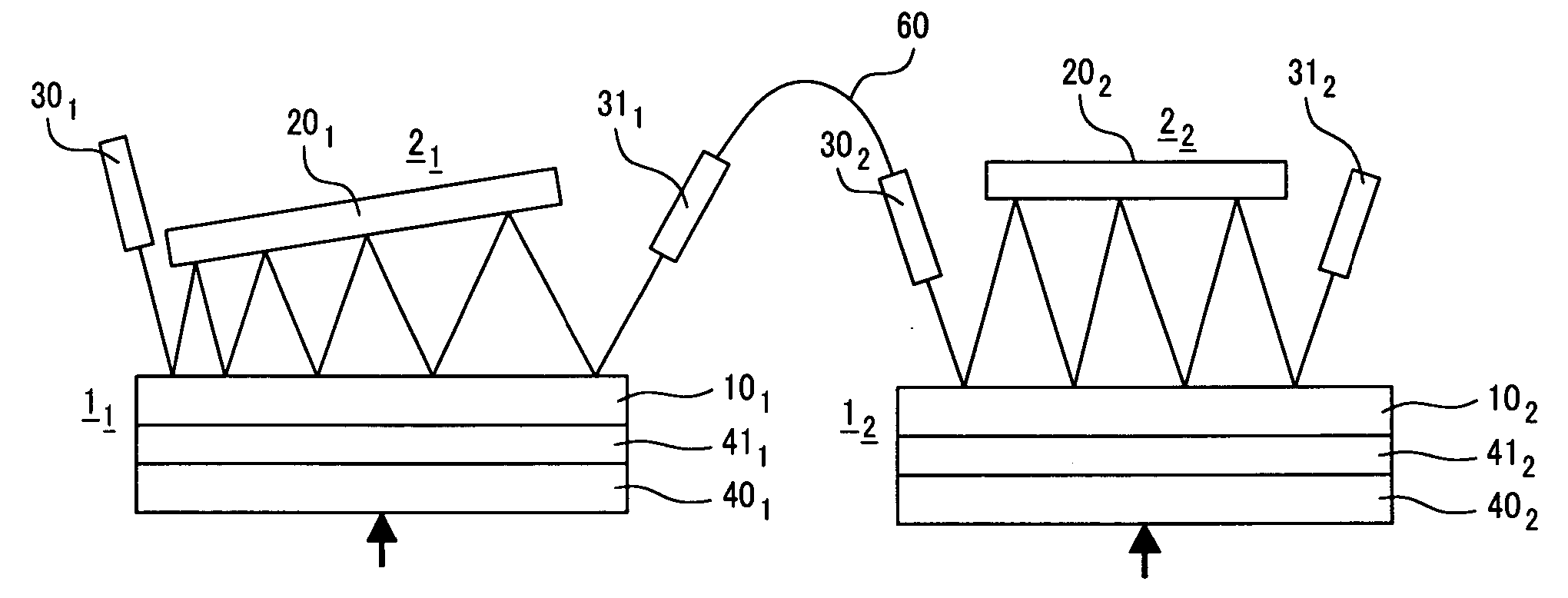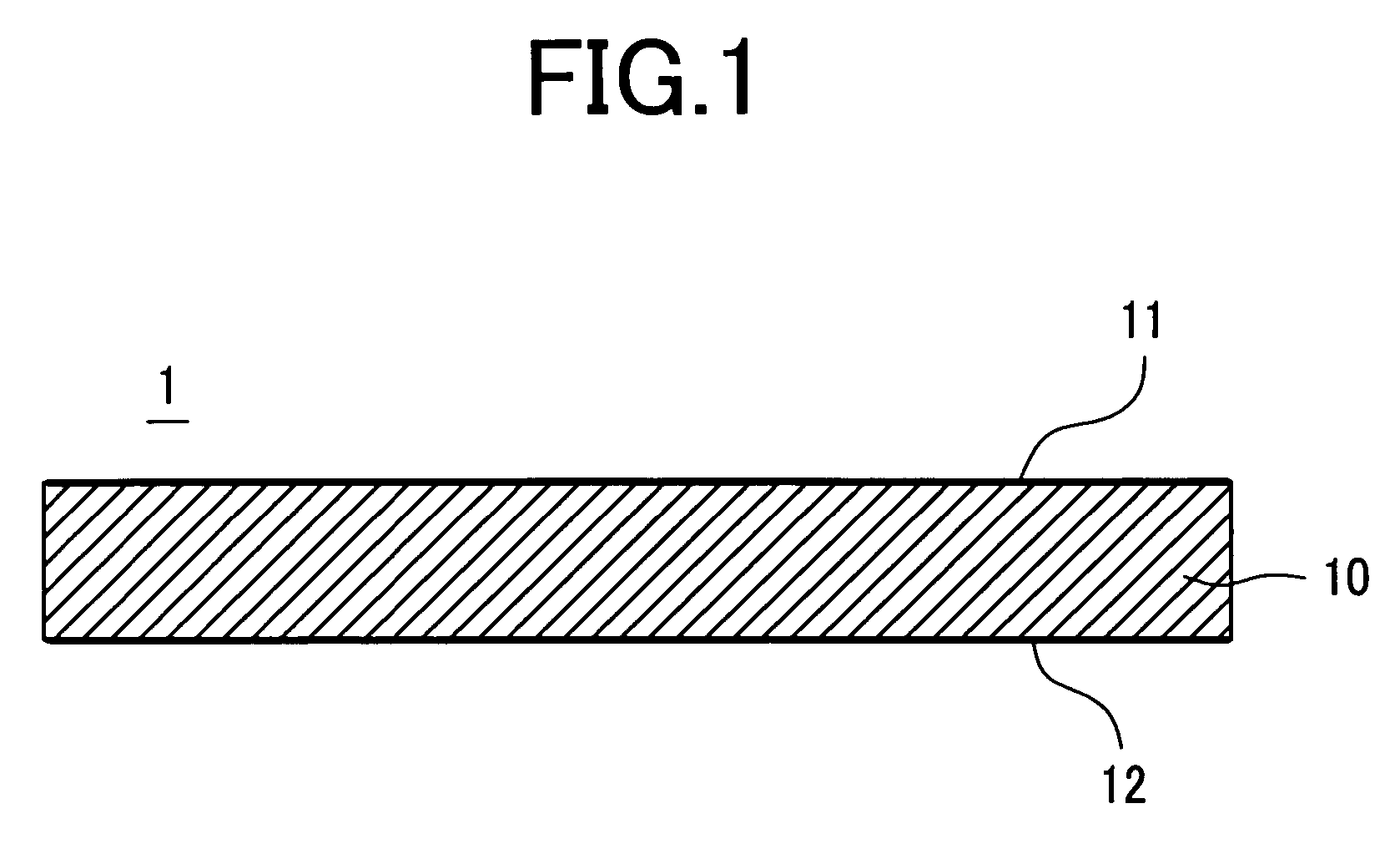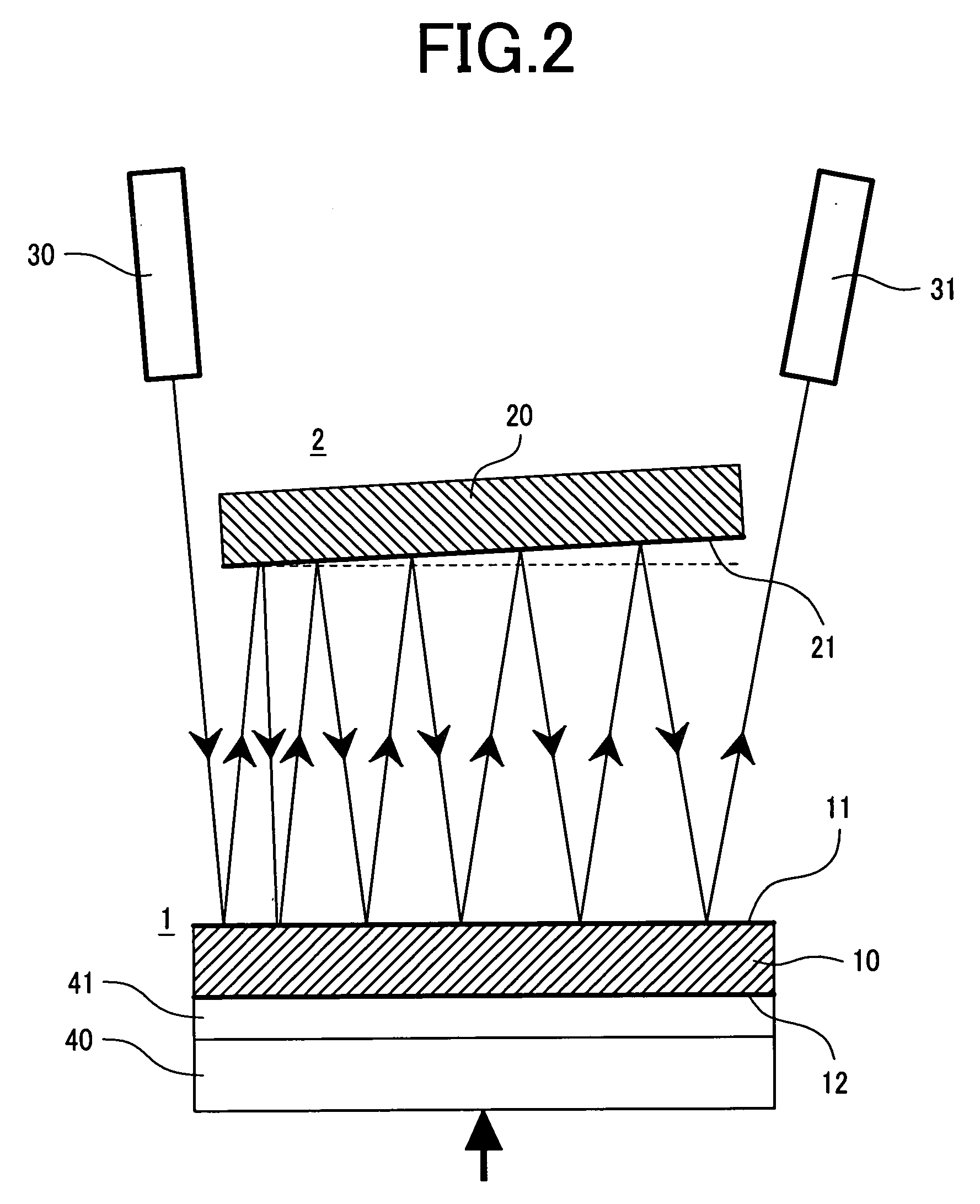Variable dispersion compensator
- Summary
- Abstract
- Description
- Claims
- Application Information
AI Technical Summary
Benefits of technology
Problems solved by technology
Method used
Image
Examples
Embodiment Construction
[0058] Embodiments of the present invention will be described in detail hereunder using the accompanying drawings.
[0059] First, an etalon is described. A cross-sectional structure of the etalon is shown in FIG. 1. Reference number 1 denotes the etalon, which includes a precisely parallelized planar plate 10 having upper and lower faces coated with reflecting films 11, 12, respectively. Metal films made of gold, silver, or other high-reflectance metallic materials, dielectric multi-layer films, or the like, are used as the reflecting films. In particular, an etalon having ideally an amplitude reflectance of 100% on one face is called the GT etalon, which was named after Gires and Tournois, the proposers. In reality, however, it is difficult to obtain an amplitude reflectance of 100%, so the reflecting films may be allowed to have an amplitude reflectance of at least about 90%. In addition, the amplitude reflectance of one reflecting film does not need to be too high when the film is...
PUM
 Login to View More
Login to View More Abstract
Description
Claims
Application Information
 Login to View More
Login to View More - R&D
- Intellectual Property
- Life Sciences
- Materials
- Tech Scout
- Unparalleled Data Quality
- Higher Quality Content
- 60% Fewer Hallucinations
Browse by: Latest US Patents, China's latest patents, Technical Efficacy Thesaurus, Application Domain, Technology Topic, Popular Technical Reports.
© 2025 PatSnap. All rights reserved.Legal|Privacy policy|Modern Slavery Act Transparency Statement|Sitemap|About US| Contact US: help@patsnap.com



